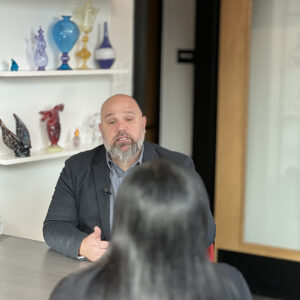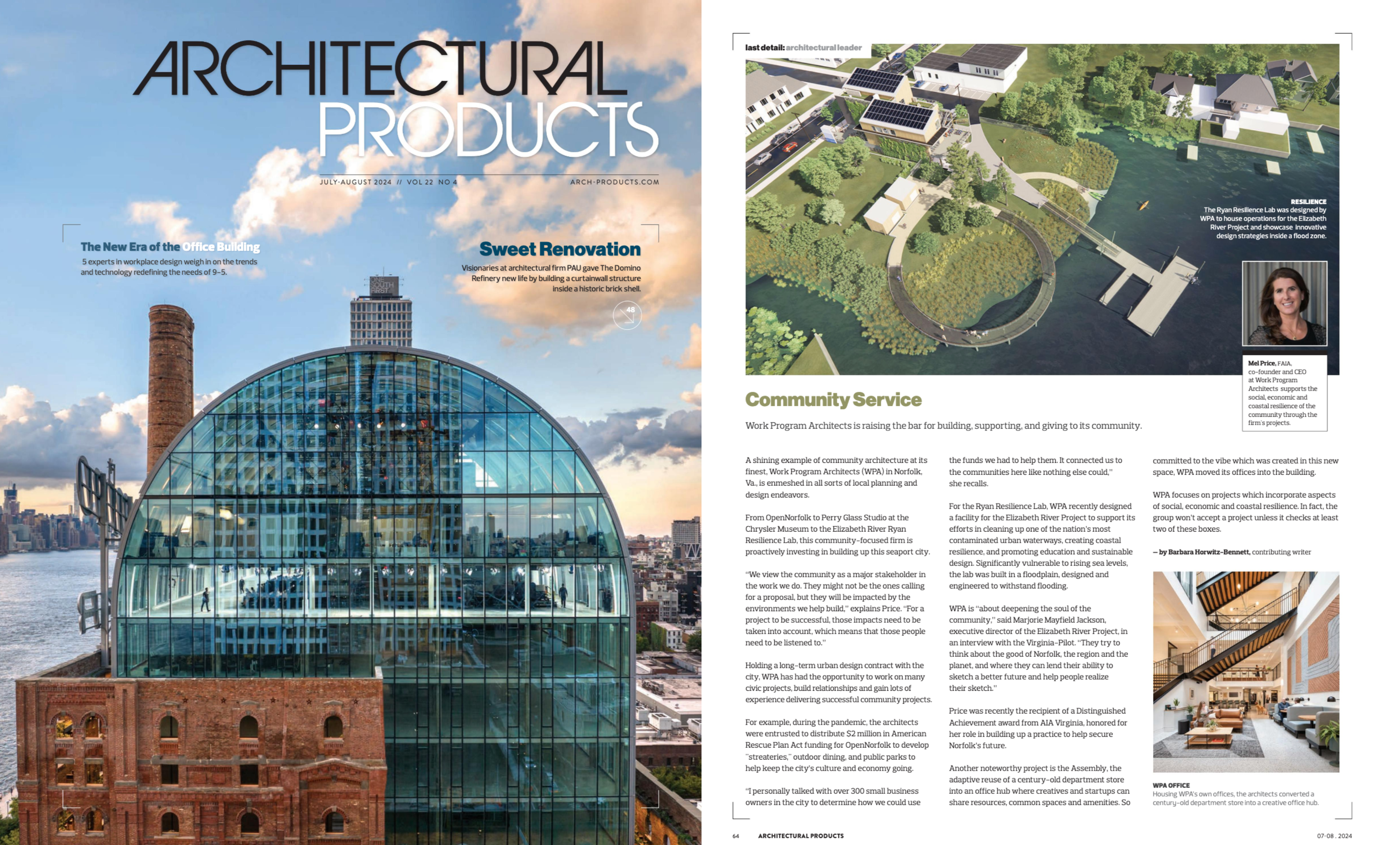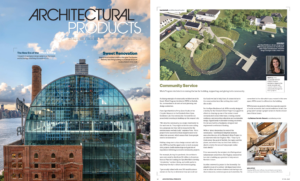The Chrysler Museum of Art’s Plan for Coastal Resilience Highlighted by Virginia Mercury
 As sea levels rise and sunny-day flooding becomes a familiar occurrence in Norfolk, the Chrysler Museum of Art is taking bold steps to protect its people, its collection, and its place in the community. A recent article in the Virginia Mercury details how the museum is confronting the climate crisis through a multi-phase master plan, which includes the recent completion of the Perry Glass Studio expansion.
As sea levels rise and sunny-day flooding becomes a familiar occurrence in Norfolk, the Chrysler Museum of Art is taking bold steps to protect its people, its collection, and its place in the community. A recent article in the Virginia Mercury details how the museum is confronting the climate crisis through a multi-phase master plan, which includes the recent completion of the Perry Glass Studio expansion.
Located at the edge of The Hague — a picturesque but increasingly flood-prone inlet of the Elizabeth River — the museum faces the kind of compounding environmental risks that are now confronting cultural institutions across the country. According to data cited in the article, more than a third of U.S. museums are located within 60 miles of a coastline, and many are unprepared for the damage that climate change is already delivering.
Work Program Architects (WPA) worked with the Chrysler to create a plan to meet these current and future challenges. The museum has already taken steps to modify its main building — installing deployable floodgates and relocating stored artwork to higher floors — but the museum’s most visible statement of intent is across the street: the new 21,000-square-foot addition to the Perry Glass Studio. Completed earlier this year, the $30 million expansion includes a host of resilient design strategies, from its elevation (four feet higher than the original studio) to its foundation, a system of 470 deep “rigid inclusions” that stabilize the soft, flood-prone soil beneath it.
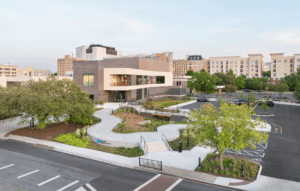
The walkway to the new building winds through a sculptural rain garden that captures stormwater runoff and slows its release into the city’s strained stormwater system. The rain garden was intentionally designed so that visitors can experience the museum’s commitment to resilience firsthand.
“We didn’t want to hide the rain garden at the back of the property,” project architect Robert Crawshaw told the Mercury. “We wanted you to be immersed in the efforts that the Chrysler was doing.”
In a city that regularly sees tidal flooding without a drop of rain, the Chrysler’s willingness to adapt in place — rather than retreat — is both a practical and symbolic decision. “The Chrysler Museum is such a part of the identity of Norfolk in that location,” WPA co-founder and design principal Thom White told the Mercury. “The power of its connection to the community is worth keeping it there.”
Read the full story here.

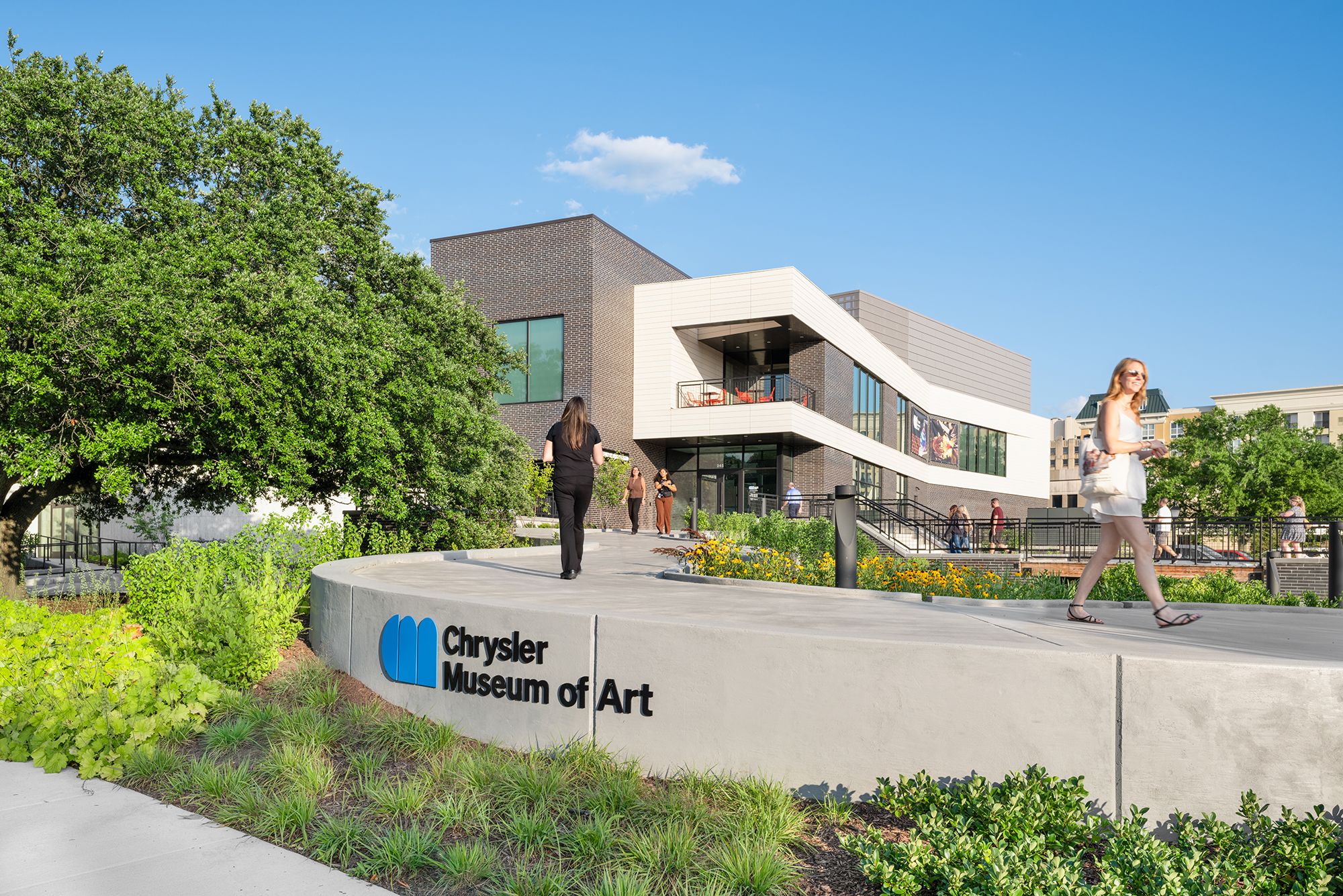
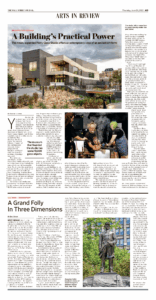
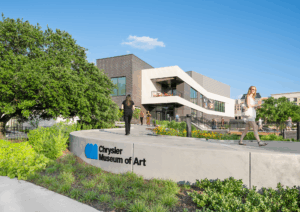
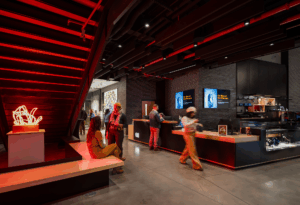

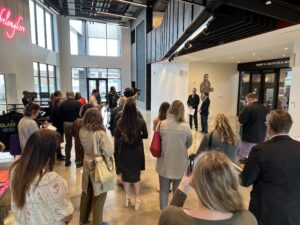 The Perry Glass Studio at the Chrysler Museum of Art has officially reopened following a $30 million expansion. The museum marked the occasion with a vibrant weekend of festivities that drew major media attention and hundreds of visitors. The grand opening included live glassblowing demonstrations by nationally recognized artists, a sold-out gala event, and a family-friendly festival featuring performances and hands-on activities.
The Perry Glass Studio at the Chrysler Museum of Art has officially reopened following a $30 million expansion. The museum marked the occasion with a vibrant weekend of festivities that drew major media attention and hundreds of visitors. The grand opening included live glassblowing demonstrations by nationally recognized artists, a sold-out gala event, and a family-friendly festival featuring performances and hands-on activities.

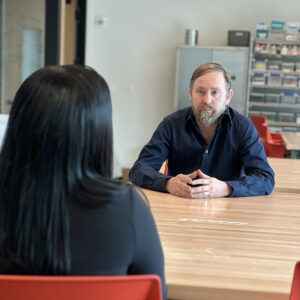 As the second and final phase of the Perry Glass Studio’s expansion and renovation nears completion, members of the press are taking notice of the new structure standing tall alongside the main Chrysler Museum of Art building in Norfolk, Virginia. These recent stories show how the WPA-designed project is elevating the museum’s beloved studio to become a world-class center for glass artistry that also demonstrates innovative approaches to flood mitigation.
As the second and final phase of the Perry Glass Studio’s expansion and renovation nears completion, members of the press are taking notice of the new structure standing tall alongside the main Chrysler Museum of Art building in Norfolk, Virginia. These recent stories show how the WPA-designed project is elevating the museum’s beloved studio to become a world-class center for glass artistry that also demonstrates innovative approaches to flood mitigation.